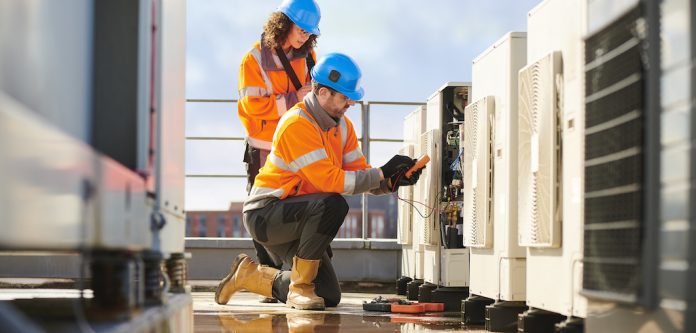By square footage, hotels and other hospitality-based properties are some of the highest energy and water users across the entire commercial real estate sector. Carbon emissions from these buildings vary greatly due to a variety of factors—from regional weather and energy costs to guest behavior and amenities. Therefore, they’re often unpredictable.
For this reason, the ULI Greenprint Center for Building Performance has identified resource-efficient and resilient development practices in its Sustainability in Hotels report as essential to remaining ahead of the curve in the highly competitive hospitality sector. The 2020 report cited energy efficiency as one of the key strategies for improvement available across all hotel types, often adding substantial value to the portfolio’s bottom line in the process. The report identifies several ways in which owners and operators can make “low-hanging fruit” adjustments, like in-room lighting, replacement of water fixtures, and on-site composting.
Increasingly, owners and operators are starting to buy into the idea that larger capital projects can achieve more substantial energy and water savings. These larger investments consist of high-efficiency energy management systems, HVAC retrofits, or on-site renewable energy, and often have long-term benefits for utility savings and guest comfort.
However, complicated ownership models and structures, concerns about guest disruption, and a lack of comprehensive utilities data are each dissuading factors for high capital projects. Even on projects where none of these is an issue, nearly all efficiency providers on the market are failing to make accurate savings predictions. This means that in a largely perfect scenario, hospitality owners and operators take a financial risk on everything—costs, change orders, NOI, etc.
Why? The current industry software packages for modeling energy consumption in a building primarily work in a top-down approach; an energy use estimate is created for the whole building and then the estimate is divided up among the equipment in the building. There are several major problems with this method:
First, most of the inputs needed are not measurable. Rather, they are “estimates” at best, and guesses or wild guesses more often. This stems from physical characteristics of the building (wall thickness, wall material, insulation material, insulation thickness, distance between studs, etc.) that, once built, are not feasible to model or estimate accurately.
Second, the top-down approach provides too many inputs. Some models require thousands of inputs, which makes using such models very time consuming for facility managers.
Third, the way in which the models are calibrated effectively strips the model of predictive capabilities. After the models are made, they are used to generate predictions for energy use for the past 12 months based on real weather data. The engineer using the model then compares those predictions to what actually happened, and here is where the main problem lies: that engineer then plays with the inputs until the model “matches” reality.
Because there are hundreds or thousands of inputs regarding building characteristics, and almost none of them are feasible to measure accurately, there are thousands or tens of thousands of ways to make the model “match” reality by altering the building characteristics. However, with the current top-down methods, there is no way for an engineer to ascertain which set is the real set during the calibration process. Therefore, when the models are used to make energy consumption “predictions” for various configurations and optimizations of systems in a building, the models fail to accurately predict energy savings because the “baseline” model is not based on actual reality.
What’s the takeaway for owners and operators? When shopping around this year for an energy-efficiency project, don’t settle for the top-down approach. Ask how savings are being calculated. There are other methods for modeling building energy consumption based on parameters that can be quickly and cost-effectively measured and that do not rely on inaccurate estimates of building characteristics.
The ULI report states, “Hotels pay utilities directly and directly recoup all savings from efficiency improvements, resulting in one of the strongest business cases for sustainability in the commercial real estate industry.” Hoteliers looking to engage in this kind of opportunity—one unique to this industry—should avoid the top-down building model, or risk leaving valuable operational and technical opportunities for savings and efficiency on the table.











